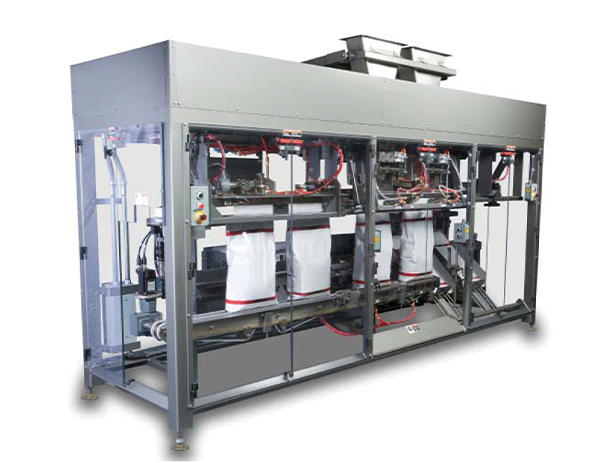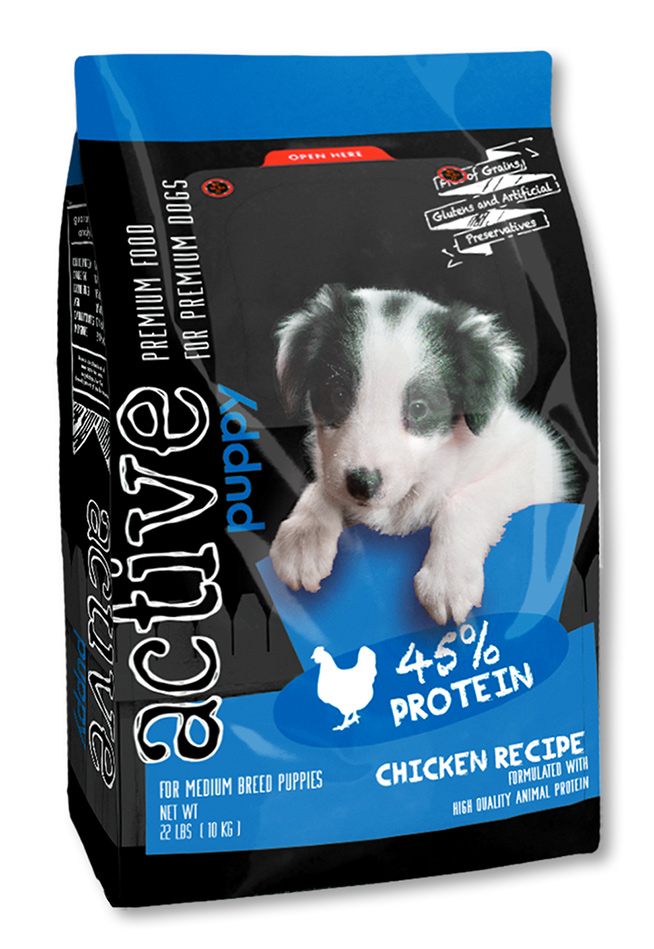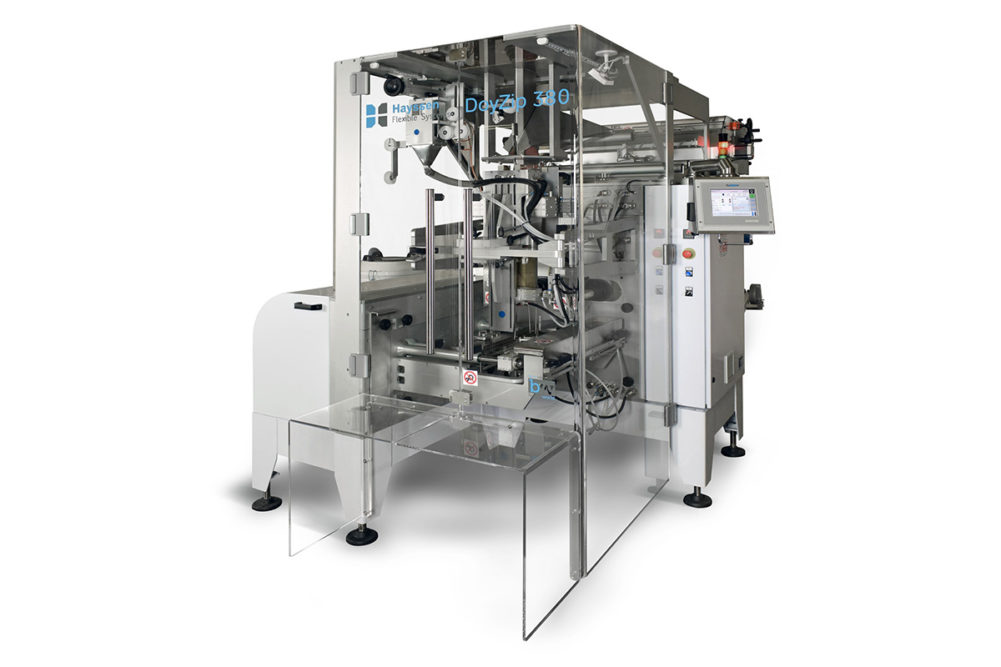While market growth is never in the bag, it’s safe to say the pet food category will expand, and with it the use of form-fill-seal (FFS) machines. The market research group Packaged Facts reports continued mid-single-digit growth for pet food packaging based on sales of pet products and the growing premium nature of such items.
While there is still demand for canned pet food products, bags and pouches remain dominant for pet food and treats. Pet food processors are keeping pace with demand by ramping up their packaging systems that include FFS machines.
Packaging material and equipment companies agree that this is a category with a lot of potential. “The whole pet food area is growing. People are busy, they love their pets and are taking care of what they are feeding them. Packaging plays a huge part of that visually. When consumers are making their purchase, they look at not only the ingredients, but how it’s packaged,” says Christine Duncan, marketing manager for Matrix, located in Saukvile, Wisconsin — headquarters of ProMach’s flexibles business line, which is comprised of the Matrix, Ossid, and FL Tecnics brands.
Heidi Oelrich, senior marketing communications leader, packaging, for BW Packaging Systems in Minneapolis, agrees, and says that pet food system suppliers change with the times and with customers. “Practically speaking, more people have flexible income and are choosing to spend it on their pets,” she says. “Our marketing and R&D teams depend on customer input to make sure we understand their business — what’s working well and what could be better. We’re taking that feedback and investing in new product development to make sure they have what they need to continue growing and thriving.”

The increased attention to pets’ diets results in pet owners taking a closer look at packaging. “The reasons behind the growth are the high esteem pets have in many households as well as a steady increase in the number of pet-owning households over the past decade. But the humanization of pets and the subsequent premiumization of pet food are two key factors driving growth,” observes Todd Addison, vice president, business development for Transcontinental (TC) Packaging, a Montreal-headquartered company that specializes in extrusion, lamination, printing and converting.
Given the competitiveness and increasing importance of package type and design, processors are seeking packaging materials and systems that are versatile and efficient. “Flexible is taking off, and it’s in a lot of different shapes for pet food — it’s not only pillow packs. You can have a gusseted four-sided seal, flat bottom or premade pouches,” Duncan says. “Even soft pet food is being put in flexible packaging.”
“Usually, dry pet food products are mainly packed in a small or medium-size stand-up pouch or flat sachet pouch. Big formats are not so common in this type of pet food, but they are possible,” Alberich adds.
A better fit
FFS systems are increasingly used in pet treat processing. “FFS equipment is often a better fit for the snacks, treats and specialty segments of the pet food industry,” reports Braden Beam, bag filling leader at BW Packaging Systems. The company offers both vertical and horizontal FFS flexible packaging equipment to handle a variety of bag types and products, he says.
Another area for FFS applications is in soft pet food. “Wet/fresh pet food is usually packed into stand-up pouch formats of all sizes. In this case, the product differentiation through the packaging plays a big role in the design, especially in small formats,” notes Alberich.
"Sample packs, which are commonly produced on form-fill-seal equipment, allow brand owners to offer a low-cost entry point for pets to consume and pet owners to evaluate the product,” says Weijia Zhang, Peel Plastic Products.
Weijia Zhang, business development manager for Peel Plastic Products, Brampton, Ontario, points to other types of pet food products packaged using FFS machines. “Where we do see more form-fill-seal requirements are for smaller formats and sample packs. Sample packs, which are commonly produced on form-fill-seal equipment, allow brand owners to offer a low-cost entry point for pets to consume and pet owners to evaluate the product,” he remarks. Peel Plastic offers rollstock film that complements premade offerings, including soft touch matte films, metallized barrier films and renewable bio-PE (biopolyethylene) that let brand owners maintain consistency in the brand regardless of format and size.
At TC Packaging, Addison says demand for flexible packaging in the pet industry has given rise to the use of a broader array of materials. “We offer a variety of flexible plastic and paper packaging including rollstock, bags and pouches, shrink films and chub films for fresh pet food, dry food, and snacks and treats,” he reports.
While there is more variety in pet food packages available today, flexible packaging made possible with FFS systems dovetails into consumer demand for sustainability. “People are looking at less packaging for less waste overall,” Duncan points out.
Flexibility meets flexible
As processors get busier with more products to package, what’s required from FFS machines? “They want versatility,” Duncan declares, noting that many processors offer several different sizes in each product line, which requires more options and quick turnover. 
Duncan also points to the success of many smaller, start-up brands in the pet food market, that are looking for efficiency as well as versatility. “The smaller companies are often coming up with a lot of variety and need a machine that will be able to package those different varieties,” she says.
The need for versatility has driven the development of BW Packaging Systems’ new doy zip machine, which is designed for flexibility and quick changeovers that allow multiple bag styles to run on the same machine.
Alberich reports that speed is also in demand, adding that Mespack works to deliver high efficiency machines with quick changeover options.
While the pet owner often drives packaging trends in the evolving pet food arena, Alberich cautions to keep the pet in mind as well. He says there are some distinct challenges with pet food packaged in FFS systems. “The main challenge in pet food packaging is related to the film smell. Animals have a sense of smell much more developed than humans, and pets can reject packaged products due to the smell of the container,” Alberich points out. That’s important for processors to keep in mind and evaluate when packaging new pet food and treats on FFS machines.
Read more articles about pet food and treat packaging trends.




